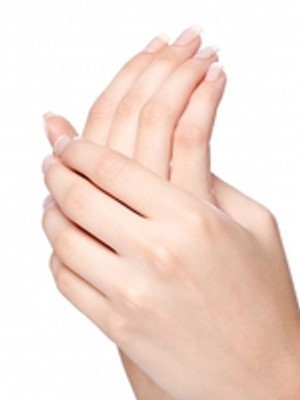What are your Nails Telling you About your Health? (Part 1)
Bethaney Wallace on 28th May 2014
The human body is an amazing thing. From all its intricacies, functions, and abilities to account for sickness, etc., it’s amazing just how many tasks it’s able to perform in a single day. All while we continue to work, sleep, eat, and perform everyday tasks. And oftentimes, it does so without telling us a single thing that is wrong. Or that making the slightest adjustment could make its job(s) easier. The occasional headache or muscle spasm might pop up, but for the most part, our bodies power through their duties unscathed and without complaining.
But that doesn’t mean they aren’t communicating when something is wrong. If we know what to look for, we can determine issues that we didn’t even know existed. Simply by paying attention to the most subtle changes that are taking place. Whether they’re happening every day or few and far between, these signs can act as important windows into how the body is functioning and what can be done to improve it.
One such window into the body – which gets little air time – are the nails. Both finger and toe versions can be monitored to see just how negative changes are taking place.
What to Look for:
When starting to monitor your nails, remember that its changes aren’t immediate. Nails grow slowly and reflect changes as they’re producing the latest rounds of keratin. However, when any of the following do take place, it’s a good idea to talk with your doctor immediately in order to start receiving treatment or further evaluations.
Dangerous signs you shouldn’t ignore:
Yellow nails – yellowing nails (those that grow that way, not those that are discolored from smoking or working with your hands) can be a sign of serious illness, such as repertory disease; this might include chronic bronchitis or issues within the lungs.
Nail spooning – occurring when the nails literally begin to “spoon” or turn up at the edges, this change is actually one of the most dangerous of them all. Nails that spoon can be a sign of anemia, iron deficiency, or even a liver condition.
When spooning, nails will also become thinner and its dip large enough to hold liquid, even in a very small amount.
Terry’s nails – Terry’s nails can be diagnosed when there is a dark line that shows up toward the end of the nail. (The section where the nail is white.) The dark section is generally slightly larger or thicker than the white section of the nail and can warn of a serious disease, including diabetes, liver disease, or congestive heart failure.
“Pitting” – nail pitting, or small indentions that grow on the bed’s surface, can be the cause of various skin conditions. Most commonly, these indentions are seen in the nails of those suffering from psoriasis, which causes flaky and itchy patches of skin.
Nail clubbing – when the nails become large or swollen, also known as clubbing, it can be the sign of low oxygen in the blood. Generally this size change is quite gradual. However, if you notice any changes taking place in fingernail size, it’s a good idea to talk with your doctor immediately.
If you see one of the above beginning to manifest within your fingernails (or toenails), it’s a good idea to schedule an appointment with your doctor as soon as possible. You should also keep track of other bodily changes, including those that are specific to the nails.
Just by being aware of the adjustments happening in (or outside of) your body, you can work to take preemptive measures toward better health.

